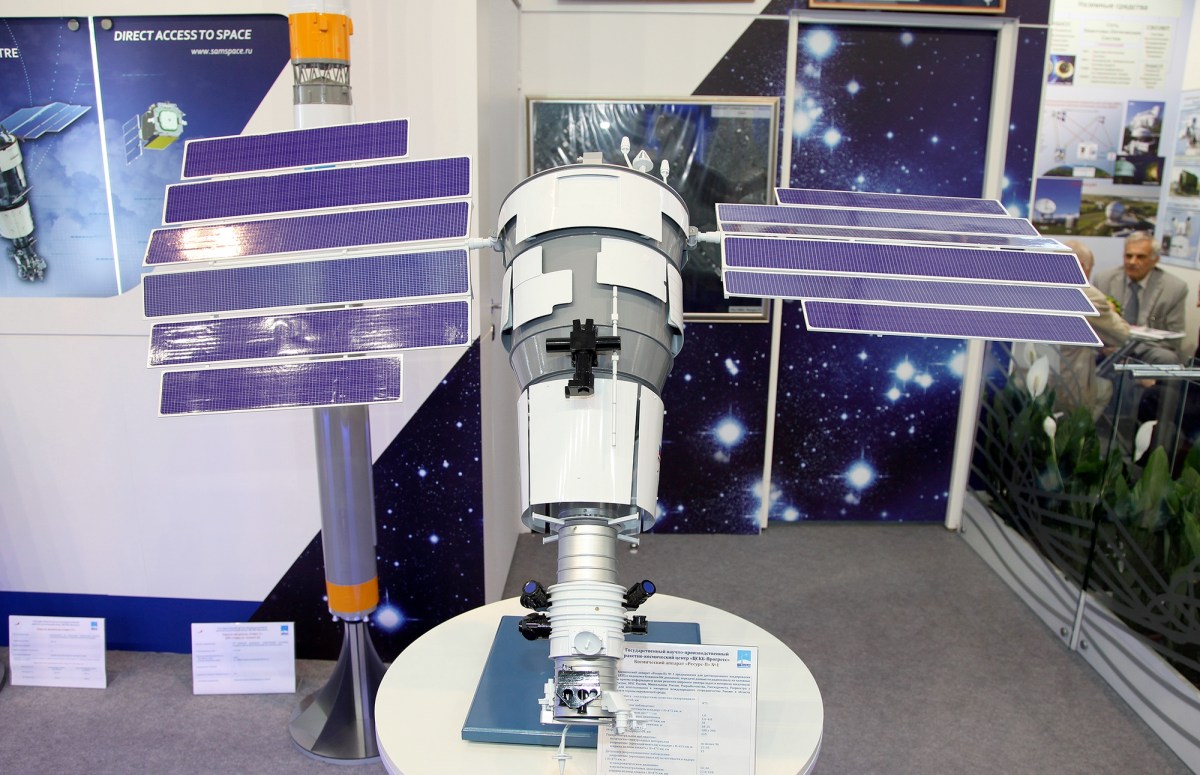TOKYO — A Russian satellite likely suffered a “low-intensity explosion” that created hundreds of pieces of debris in low Earth orbit, according to one company’s analysis.
Both U.S. Space Command and private space situational awareness providers reported that Resurs P1, a defunct Russian remote sensing satellite, suffered a breakup event on June 26. That event created more than 100 pieces of debris that could be tracked by ground-based sensors.
The cause of the breakup remains unclear, but LeoLabs, which was the first to publicly report the event, believes that a “low-intensity explosion” either from a collision or within the spacecraft itself created the debris. That explosion has created at least 250 debris fragments at altitudes extending as high as 500 kilometers.
That conclusion came from the company’s analysis of that debris cloud, using its own tools to look at the number of distribution of debris objects to better understand what created it.
“While much of the debris cloud has yet to be analyzed fully, our preliminary assessment concludes that the most likely cause of the event is a low intensity explosion,” LeoLabs concluded in a July 3 statement posted on LinkedIn. “This explosion could’ve been triggered by external stimuli such as an impact by a small fragment (not currently cataloged) or an internal structural failure leading to a propulsion system failure.”
That analysis rules out speculation that the satellite might have been used as a target for an anti-satellite weapons test, much like Cosmos 1408 in November 2021. There had been no other indications, such as statements from the Russian or American militaries or airspace restrictions, to suggest such a test was planned or carried out.
The explosion does not appear to have caused the satellite itself to completely break apart. Optical observations of Resurs P by Sybilla Technologies, a Polish space situational awareness company, report that the main satellite is still there, rotating with a period of two to three seconds.
Images taken before the breakup by HEO, an Australian company that uses commercial satellites to image other space objects, show that the solar panels on Resurs P1 and two follow-on spacecraft, P2 and P3, failed to fully deploy. It’s not clear if this deployment malfunction is linked in any way to the breakup.
While the fragmentation event does not appear to be a worst-case scenario, it still creates a hazard for other satellites in low Earth orbit. The altitude of some of the debris, LeoLabs noted, takes it through the orbits used by many other operational satellites as well as the International Space Station and China’s Tiangong space station. Those objects will likely remain in orbit for “weeks to months” before atmospheric drag causes them to decay.
“This event demonstrates the ongoing risk of defunct spacecraft in orbit,” the company concluded. Resurs P1 was decommissioned in 2021 and will reenter later this year as its orbit, currently about 355 kilometers, decays.
It is not alone, LeoLabs added. “There are over 2,500 long-lived intact derelict hardware (i.e., abandoned rocket bodies and non-operational payloads) that may suffer a similar fate to Resurs P1 over time.”
